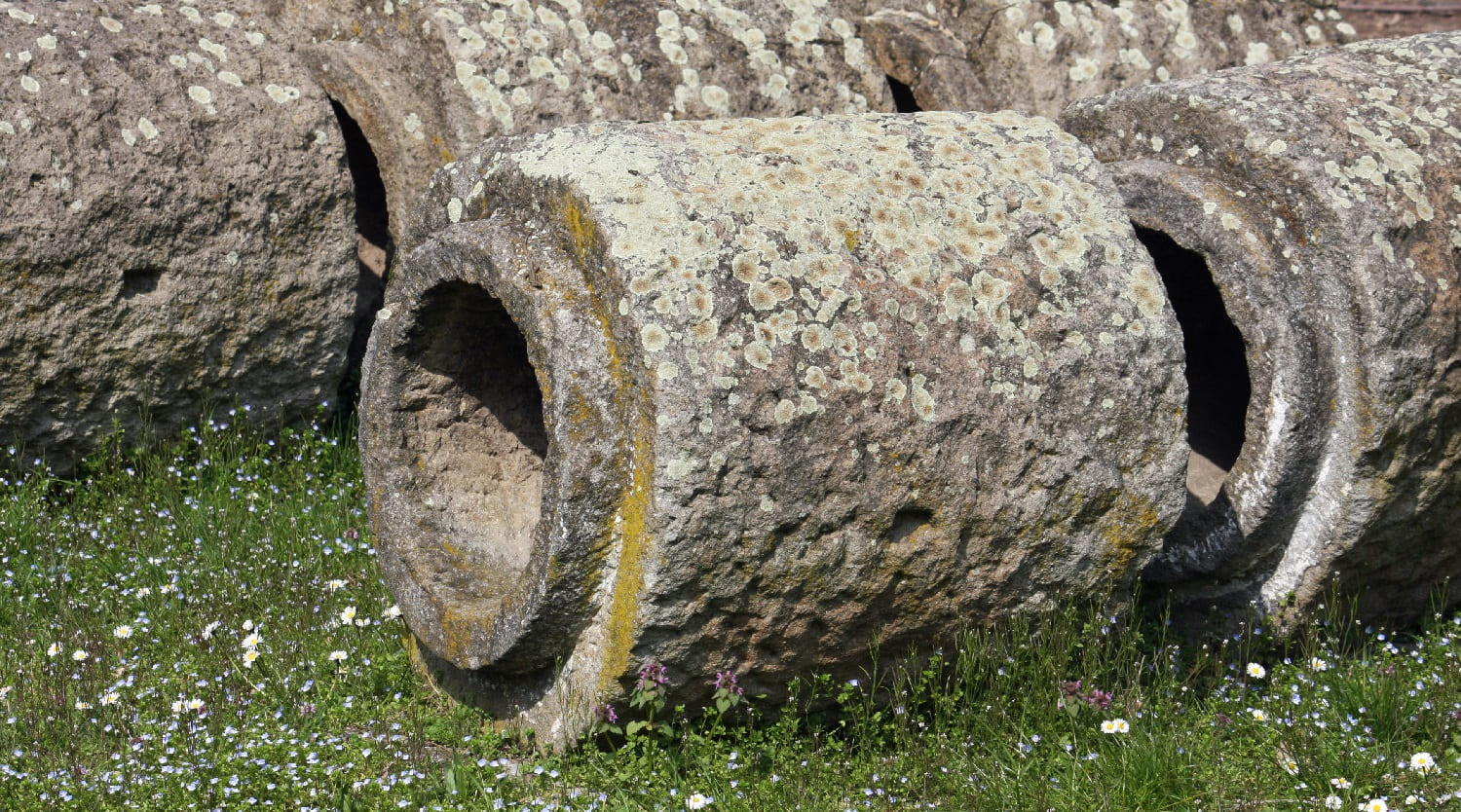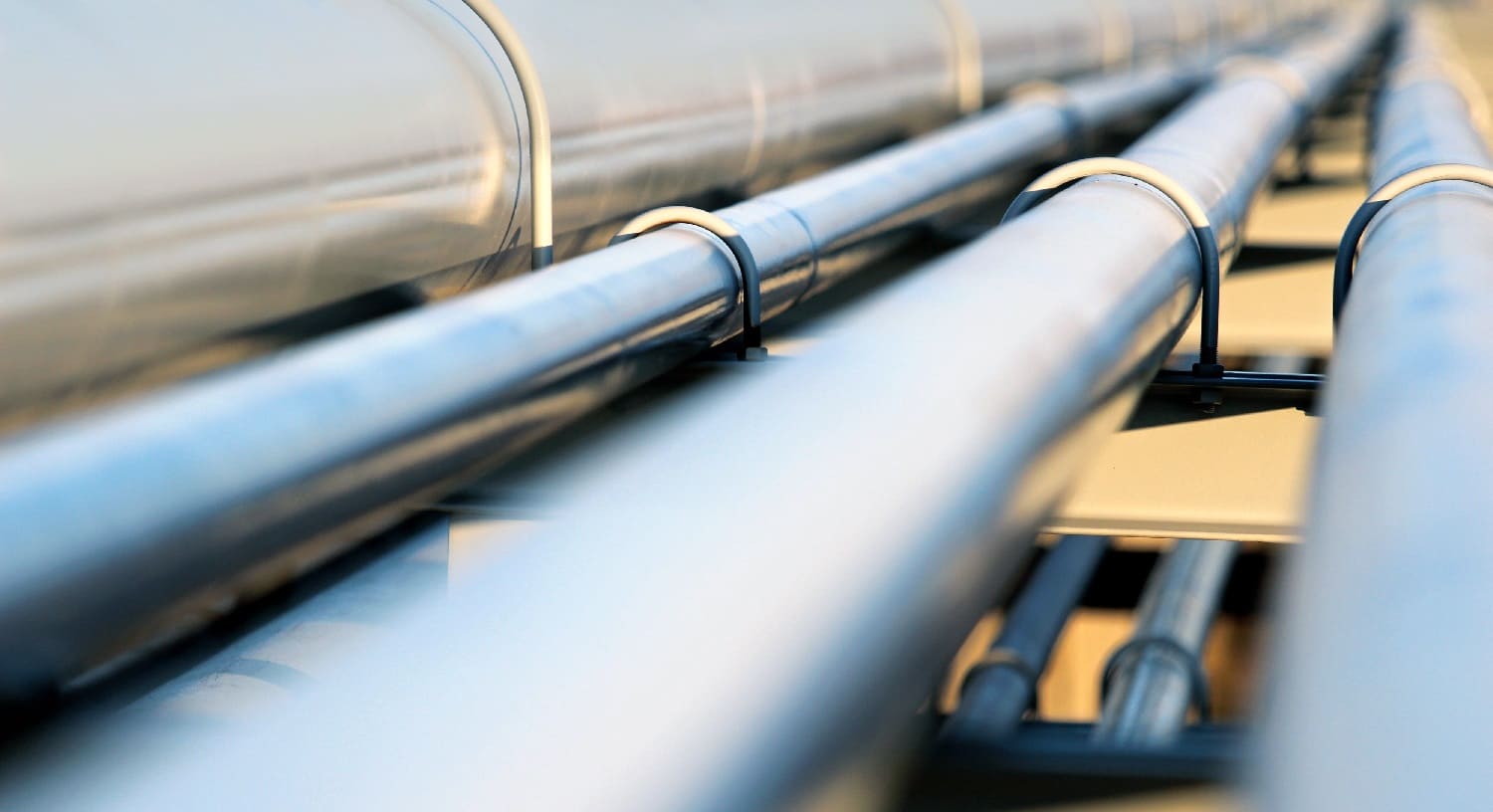For example, steel pipes for process pipelines (the so-called supply pipelines located within the same industrial enterprise) with their high strength, resistance to mechanical stress and resistance to pressure and temperature drops are so universal that they can be used in the transportation of hot water, oil, gas or steam under high pressure, both above and below the ground.
Pipes for the main pipelines that transport oil, gas, water, etc. from the deposit to the consumption area, pipes for underwater pipelines (especially deep-sea transportation, which covers depths of more than 400 m!) and pipes for field pipelines are indispensable logistics lines today.
There are widely different pipe diameters for pipelines, -from the very small, about 16-17 mm, to two metres. And absolutely all of them are extensively used in the modern world. However, the process of transporting fluids and gases through pipes has a history going back several thousand years. It’s breath-taking when you realise that pipeline transportation was being developed independently by such different ancient civilisations, located at a great geographical distance from each other!

Water piping for human life and health
The first pipelines were made of clay, tree trunks and stones, then brick, reinforced concrete, and finally steel pipes were used. A reference to ancient water supply systems, which are also called aqueducts, can be found in the Bible.
The Book of Ecclesiastes refers to special water reservoirs, from which the groves of King Solomon, famous for his wisdom, were irrigated. The procurator of Judea, Pontius Pilate, who, according to the Holy Scriptures, imposed a sentence of death on Jesus of Nazareth, among other temporal affairs, restored the water supply of his wise predecessor. The biblical structure is still used, partly for its intended purpose, and has continued to transport water through the millennia. In general, the ruins of numerous structures of the Holy Land that have survived to the present day show that a lot of water pipelines were built in the ancient Middle East. For example, according to the Roman historian, Eusebius of Caesarea, writing in the 3rd century AD, the water supply system of Jerusalem, located on extremely poor rocky soil, was so complex and extensive that the city seemed a blooming Garden of Eden, awash in water. The Hebrew King Herod not only installed a water supply from the Carmel mountain range to Caesarea of Palestine, founded by him in 22BC, but also built underground channels there for sewage discharge.
By the way, Maya civilisation also used civilised methods of sewage treatment. During excavations of an ancient Maya city near Chiapas in Mexico, archaeologists discovered a non-typical aqueduct. It got narrow towards the end and it was also installed at an angle. According to researchers, the water fountain, caused by this technical solution, could reach six metres in height. The obtained water pressure was used by the Maya to create an equivalent to the modern flushing system in their toilet rooms.

The Romans were the true exponents of pipeline construction. They built extremely complex constructions from an engineering point of view, but one can safely say that they were not technologically obsolete even a thousand years after the fall of the Roman Empire. For example, 11 aqueducts with a total length of 350 km supplied water to the eternal city of Rome. And only 47 km of them were above ground. The majority of Roman pipelines were underground. Pipes for the construction of such pipelines were made of very advanced construction materials for the time – for example, waterproof trass concrete (a mixture of sand, pozzolan and gravel).
The longest Roman aqueduct, with a length of 141 km, was built in the 2nd century AD and served as a water source for Carthage. Now this monument to engineering is located in Tunisia.
Another example of an outstanding design is the Eifel Aqueduct in Germany, built in AD 80. It's 130 km long and it is almost completely underground; the water was carried entirely by gravity. The Eifel Aqueduct still exists and is in good condition.
Another thing is that this historical monument serves as a kind of symbol of how, in the Middle Ages, Europeans managed to completely forget all of the engineering developments of ancient Egypt, Assyria, the Middle East and Rome. Alas, in the Middle Ages, the pipes of the unique Eifel pipeline were used as a source of stone, and the Roman aqueduct itself became a huge stone quarry. At the same time, Europe, until the Industrial Revolution, extracted water from wells, and spilled sewage under its feet, suffering from endless epidemics of infectious diseases.
With the beginning of the rapid development of industry in the 19th century, when iron pipes began to gradually replace concrete pipes, the United Kingdom and the United States became leaders in the construction of modern water-supply systems.

And what about Ukraine? Today, the total length of Ukrainian water-supply networks is around 104,000 kilometres. Unfortunately, more than a third of them require urgent repairs. The situation with the sewage system is even worse. Their length is 34,000kilometres, while up to 40% of this length has been recognised as being in need urgent repairs. Fortunately, modern steel pipes, with which obsolete water and sewer networks are gradually being replaced, allow these modernised waterworks to be used without any problems for several decades.
Gas pipelines for heat and raw materials
If Ukrainian water pipelines can be called very long, the Ukrainian gas transportation system (GTS) is one of the longest in the world. In Europe, it is the second-longest gas pipeline. The Ukrainian GTS consists of 283 thousand kilometres of gas pipelines, including around 246,000 kilometres of distribution networks and around 37,000 kilometres of main pipelines. And there are gas storage tanks, compression stations, gas measuring stations and many other related facilities. The first kilometres of this network were built in Lviv region, from Dashava to Stryi, back in 1924. So, in four years our GTS will celebrate its centenary.

In general, for such a complex engineering idea as transporting gas through pipes, a 100-year history already seems quite significant.
But in fact, primitive gas pipelines were used more than 2,000 years ago. So, in ancient China, in the 2nd-3rd centuries BC, a kind of main gas pipelines were installed from local natural gas deposits, and from them, distribution networks made of bamboo (bamboo stems are extremely flexible and hollow inside) were laid. From engineering decisions of that time, it is also known that the pipe joints of such gas pipelines were sealed with hemp, and gas was transported by gravity. The ancient Chinese used natural gas not only for domestic purposes, illuminating their homes and public places, but also for industrial needs! Using heat from natural gas, they extracted salt from brine.
By the way, in the modern industry, gas is used not only as a source of heat, but also as a raw material – for example, in the production of chemical fertilisers.
As for gasification in Europe, here the history of the development of gas transportation is similar to the water pipelines. In the first half of the 19th century, during the Industrial Revolution, Europeans began to build the first gas pipelines and widely use natural gas for heating and lighting. Around the same period, the first gas plants were built in the Russian Empire. The above-mentioned gas pipeline between Dashava and Stryi was, in fact, the first such facility in the USSR. Later, in the early forties, it was extended to Lviv. The construction of gas pipelines did not stop even during World War II.
Now, the Ukrainian gas-transportation system is connected to the main gas pipelines of all of the states neighbouring Ukraine to the east and the west.
Modern water-supply systems and sewage systems supply clean water to our homes, industrial enterprises and offices and carefully dispose of wastewater. Modern gas pipelines transport natural gas to industrial giants and cosy kitchens. Without these complex transportation systems, our lives and our entire world would be completely different, without water, heat, light, comfort, and, of course, civilisation.
